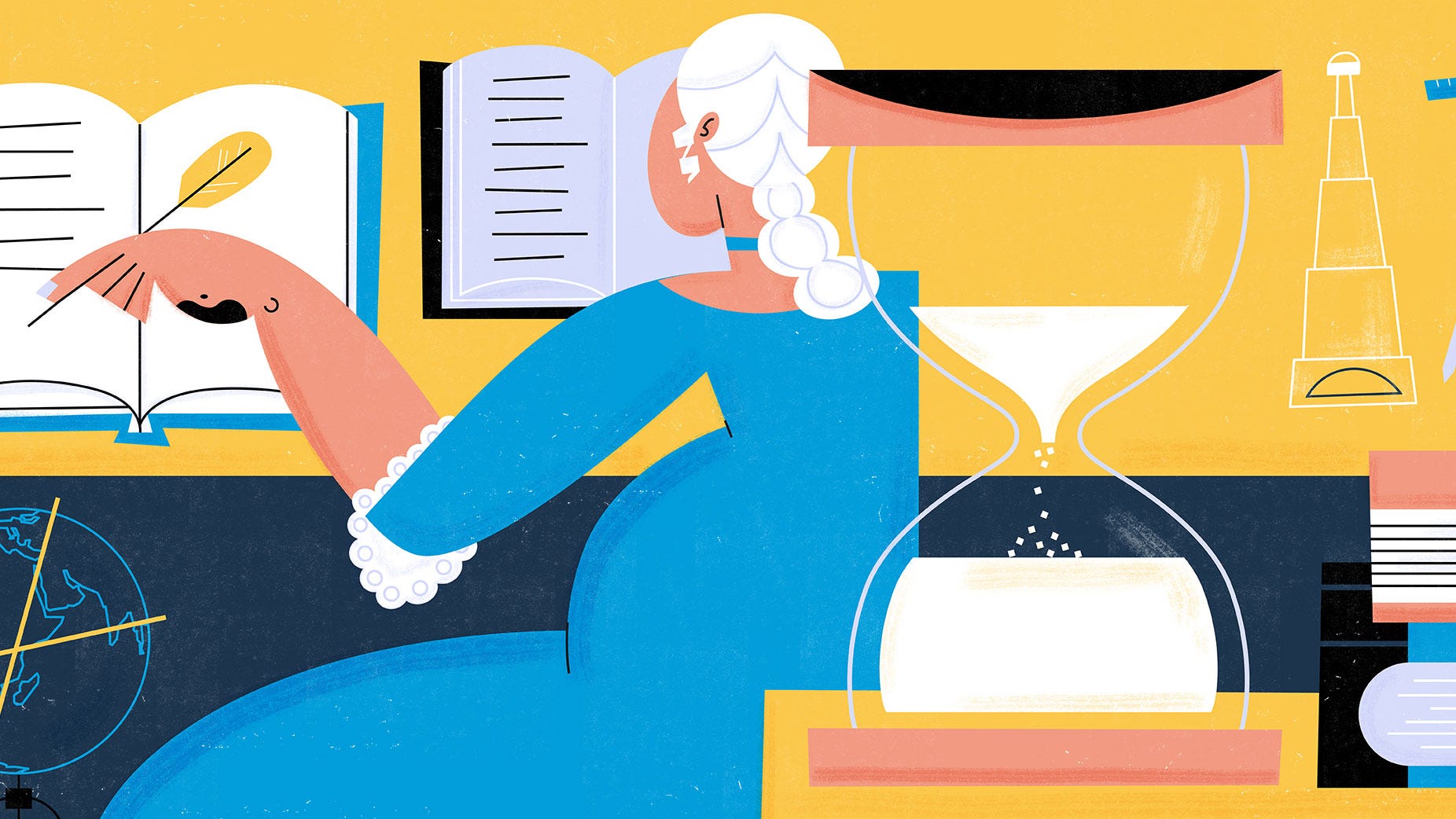The Pregnant Scientist Who Raced Against Death to Transform Physics
In 1749, Emilie du Châtelet feared bearing a child at 42 would be the last thing she did. In her final year, she worked furiously on a magnum opus that would change the world.

Illustrations by Michelle Mruk | Edited by Lynne Peskoe-Yang
In the early hours of one morning in May of 1749, Gabrielle Emilie le Tonnelier de Breteuil, the Marquise du Châtelet, worked furiously at her desk in an ornate three-storied Parisian house. Piles of books on mathematics and scientific instruments littered her desktop and spilled over onto the floor, the bureau, the shelves. The marquise’s fingers were stained dark with ink, but she didn’t care. No one important was going to see her anytime soon. She had long given up the pleasures of society life.
Splayed out next to the marquise was a red, morocco-bound copy of Sir Isaac Newton’s Philosophiæ Naturalis Principia Mathematica (Mathematical Principles of Natural Philosophy), the 510-page, three-volume masterpiece that had revolutionized the scientific world and helped usher in the European Enlightenment. What had started as a basic translation from Latin into French had now morphed into a full-blown commentary. The work had prov…

